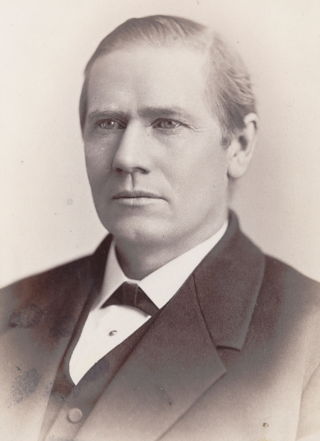
Syracuse is a city in and the county seat of Onondaga County, New York, United States. With a population of 148,620 and a metropolitan area of 662,057, it is the fifth-most populated city and 13th-most populated municipality in the state of New York.

Syracuse University is a private research university in Syracuse, New York, United States. Established in 1870 with roots in the Methodist Episcopal Church, the university has been nonsectarian since 1920. Located in the city's University Hill neighborhood, east and southeast of Downtown Syracuse, the large campus features an eclectic mix of architecture, ranging from nineteenth-century Romanesque Revival to contemporary buildings. Syracuse University is organized into 13 schools and colleges and is classified among "R1: Doctoral Universities – Very high research activity".

The S. I. Newhouse School of Public Communications, commonly known as the Newhouse School, is the communications and journalism school of Syracuse University in Syracuse, New York. It has undergraduate programs in advertising; broadcast and digital journalism; esports communications and management; magazine, news, and digital journalism; public relations; television, radio and film; visual communications; and music business. Its master's programs includes advanced media management; advertising; audio arts; broadcast and digital journalism; Goldring arts journalism and communications; magazine, news and digital journalism; media studies; multimedia, photography and design; public diplomacy and global communications; public relations; and television, radio and film. The school was named after publishing magnate Samuel Irving Newhouse Sr., founder of Advance Publications, who provided the founding gift in 1964.

Buffalo Memorial Auditorium, colloquially known as The Aud, was a multipurpose indoor arena in downtown Buffalo, New York. Opened on October 14, 1940, it was home to the Canisius Golden Griffins (NCAA), the Buffalo Bisons (AHL), the Buffalo Bisons (NBL), the Buffalo Braves (NBA), the Buffalo Sabres (NHL), the Toronto-Buffalo Royals (WTT), the Buffalo Stallions (MSL), the Buffalo Bandits (MILL), the Buffalo Blizzard (NPSL) and the Buffalo Stampede (RHI). It also hosted events such as college basketball, concerts, professional wrestling and boxing. The venue was closed in 1996 after the construction of the venue now known as KeyBank Center, and remained vacant until being demolished in 2009.
The Daily Orange, commonly referred to as The D.O., is an independent student newspaper published in Syracuse, New York. It is free and published once a week during the Syracuse University academic year.

Syracuse University College of Law (SUCOL) is a Juris Doctor degree-granting law school of Syracuse University in Syracuse, New York. It is one of only four law schools in upstate New York. Syracuse was accredited by the American Bar Association in 1923 and is a charter member of the Association of American Law Schools.

The Rev. James Roscoe Day, D.D., L.L.D. was an American Methodist minister, educator and chancellor of Syracuse University.

Archbold Gymnasium is a gymnasium located on the campus of Syracuse University in Syracuse, New York.

The State University of New York Upstate Medical University is a public medical school in Syracuse, New York. Founded in 1834, Upstate is the 15th oldest medical school in the United States and is the only medical school in Central New York. The university is part of the State University of New York (SUNY) system.

Hull Minster is the Anglican minster and the parish church of Kingston upon Hull in the East Riding of Yorkshire, England. The church was called Holy Trinity Church until 13 May 2017 when it became Hull Minster.

Setnor School of Music, officially The Rose, Jules R., and Stanford S. Setnor School of Music, is one of seven academic units of the College of Visual and Performing Arts of Syracuse University. It is housed primarily in the historical Crouse College building.

Archimedes Russell was an American architect most active in the Syracuse, New York area.

Roosevelt Organ Works was an American manufacturer of pipe organs. It was founded by Hilborne Roosevelt (1849–1886) and his younger brother, Frank Roosevelt (1862–1895), in 1872. It operated in New York City, with branches in Baltimore and Philadelphia. The brothers built some of the largest organs in the United States during their career, and many today are still prized for their quality and tone. The company was in operation until 1893.

George Franklin Comstock was an American lawyer and politician. He was Chief Judge of the New York Court of Appeals from 1860 to 1861.

The Syracuse University Marching Band (SUMB), also known as the Pride of the Orange, is the collegiate marching band of Syracuse University. The band consists of approximately 200 members. The SUMB performs at all home Syracuse Orange football games throughout the season in the Carrier Dome, and also takes part in parades and other performances throughout the year. It is one of the largest student organizations at Syracuse University, and one of the oldest collegiate bands in the United States.
Melvin Arnold Eggers was the ninth Chancellor and President of Syracuse University. Eggers took office in 1971, amidst tumult at Syracuse and other university campuses, and retired in 1991. He is the third-longest serving chancellor in Syracuse history.

University Hill is a neighborhood and business district in Syracuse, New York, located east and southeast of Downtown Syracuse, on one of the larger hills in Syracuse. The neighborhood is bounded on the west by Almond Street and Interstate 81. It continues east to Ostrom Avenue and Thornden Park, where it borders the Westcott and University neighborhoods. Interstate 690 currently serves as the neighborhood's northern boundary.

Charles N. Sims was an American Methodist preacher and the third chancellor of Syracuse University, serving from 1881 to 1893. Sims Hall and Sims drive on the Syracuse campus is named for him.

The Syracuse University College of Engineering and Computer Science is one of the 13 schools and colleges of Syracuse University. The College offers more than 30 programs in four departments – Biomedical and Chemical Engineering; Civil and Environmental Engineering; Electrical Engineering and Computer Science; and Mechanical and Aerospace Engineering and The College.



























